Moto Z2 Force detailed review
What qualifies as a high end premium phone? Ask anyone and the answer will range from cutting edge hardware, to a never-ending list of features and a shiny new design. Rarely will you find the build quality of a smartphone taking precedence. Even more so, in the last few years as manufacturers seem to have a new liking for phones with glass back. Well, Motorola has something different to say about that. The top of the line flagship phone by the company, that released in India, albeit six months late, aims to last longer than the expensive offerings from the likes of Samsung and Apple — Both in terms of build quality and features. We’re talking about the Moto Z2 Force, the company’s second attempt at a modular phone with a build quality that can outlast the flashiest of phones.
It’s a novel gesture from Moto. By making a phone that wouldn’t beg for an upgrade in less than a year, the company may be losing out on sales volume, but it will gain more goodwill from satisfied customers than ever before. When you are spending Rs 30,000 and above on a smartphone, you would expect it to remain valuable longer. No one likes to see a cracked display, and the Moto Z2 Force will not let you face that humiliation. Let it drop, let it slip, let it fall. The display will remain intact.
Yet, like everything in this planet, it’s not perfect. Under the hard, nearly unbreakable exterior is a processor that’s now a year old while those fascinated by the new taller displays will find the Moto Z2 Force ancient almost.
It’s this set of contrasting elements that made reviewing and recommending this phone a little difficult. Not as difficult as shattering the display of this phone, though.
Since this is such a unique proposition with highly contrasting pros and cons, I decided to break this review down into questions you might ask yourself before buying.
How shatterproof is the Shattershield display?
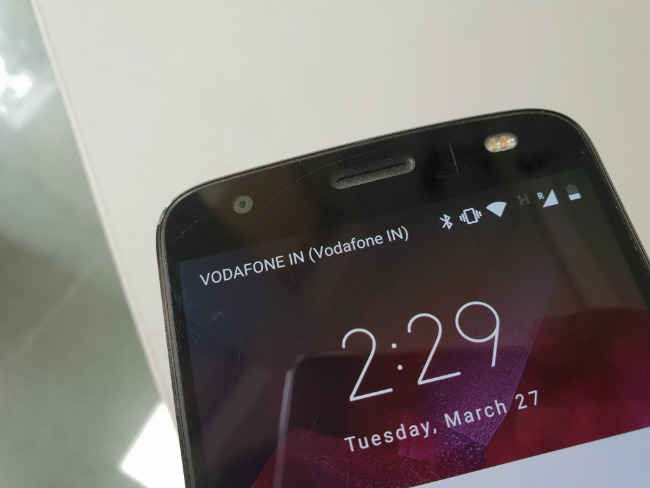
The best part about the Moto Z2 Force is how non-chalantly you can use it. All the money in the world and you will still be appprehensive of how you take out your iPhone when out walking, but with the Moto Z2 Force you can simply throw it around and not bother giving a second thought. That’s because of the reinforced display that Moto has been developing for quite a few years now. First seen in the Moto X, the ‘indestructible’ display has come a long way. Moto has managed to make it thinner and more resistant to impacts in the Moto Z2 Force.
The ShatterShield Display is actually a five-layer contraption. What you touch and feel is the exterior lens with a hardcoating layer that prevents dents and abrasions. Below it is another interior lens that is transparent and won’t crack or shatter. Under that is the dual touch layer that accounts for the touch input and further below it is the P-OLED panel. Finally, keeping everything in place is an aluminium chassis that provides the structural rigidity.
In our drop tests, we ‘accidentally’ dropped the phone on the floor in the office, outside on asphalt and down the stairs. The phone survived each drop. We also dropped it from various heights — While holding the phone against the ear, from the pocket and from the desk. Based on that, we figured as long as the phone isn’t dropped from the 13th floor of the building, the display will see no damage. By damage, we mean the display will not shatter. There will be multiple scratches on the display though. The exterior lens may be a shock-absorber but it’s highly scratch-prone. You might enjoy hurling this phone around, but a scratched display isn’t anything good to look at as well. Additionally, you should avoid pressing your fingers too hard on the display. The plastic lens tends to show permanent marks and it’s advisable to put a screen protector on top of it.
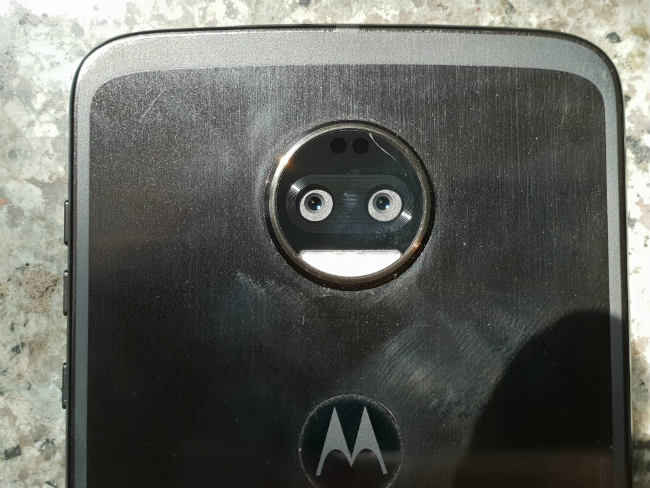
Moreover, the display may be shatterproof. But the rest of the body isn’t quite indestructible. After a period of throwing the phone around, we managed to chip the paint off the edges while the camera unit had a nasty scratch. There are also reports that while the display does not shatter, the exterior lens have been allegedly peeling off, but we faced no such issues while reviewing the phone.
Does the extra layers compromise on display quality?

As we mentioned earlier, the ShatterShield display has come a long way. The earlier unbreakable displays seen on the Moto Z Force and the Moto X Force compromised on the display quality while improving the durability. That seems to have changed as the Moto Z2 Force’s 5.5-inch 2K display is quite crisp and vibrant. Just that the colours don’t pop out like other OLED panels seen on the OnePlus 5T and the Galaxy S9.
Nevertheless, it’s enjoyable to watch content on the screen. The viewing angles are decent while the whites come off a little cooler and the colours seem oversaturated, which are typically the characteristics of an OLED display. If you look at the panel from a distance when the screen is off, you can make out the translucent exterior lens. This is also a standard 16:9 display, so it may feel ancient in comparison to the newer crop of phones that sport the taller 18:9 screens.
Moto offers options to tweak the colour temperature and the colour gamut, but the default calibration should have been more accurate. A photographer or a graphics designer can easily realise this is not the most accurate display out there.
Is the Moto Z2 Force slower than newer flagships?
The Moto Z2 Force came six months late to India. Globally, the phone has been available since July last year. It made its way to India in February this year. The long gap in making the phone available in the country means that the Z2 Force is not new anymore. In fact, the top-of-the-line spec sheet of the phone is now matched by less expensive smartphones as well. The Z2 Force is powered by the Qualcomm Snapdragon 835 chipset which was the flagship chipset in the Google Pixel 2, OnePlus 5T and the likes. This means, in terms of raw performance, the Z2 Force is right up there with last year’s flagships. However, with the new crop of Snapdragon 845-powered flagships right around the corner, the Z2 Force may lose relevance sooner than you think.
Nevertheless, the phone performs decently in synthetic benchmarks. The Geekbench and 3D Mark scores are indicative of the performance and it is almost as par with the OnePlus 5T which has been hailed as one of the fastest Android devices currently in the market. It’s visibly faster than the cheaper Honor View 10 which uses a proprietary chipset, in terms of single-core performance and graphical prowess and even beats the Xiaomi Mi Mix 2.
The real world usage had nothing to complain about either. The Z2 Force relies on near stock Android with minor (but useful) modifications like Moto Actions. Stock Android 8.0 makes the phone fly like a beast. You will hardly find any lags in usage. You can even transition from one app to the other quite fast. The performance is similar to a 2017 flagship, which is good enough. Despite improvements in performance, real world usage has peaked in Android devices. Chipsets may get more and more powerful over the year, but there will be very little visible difference in performance.
What about the camera?
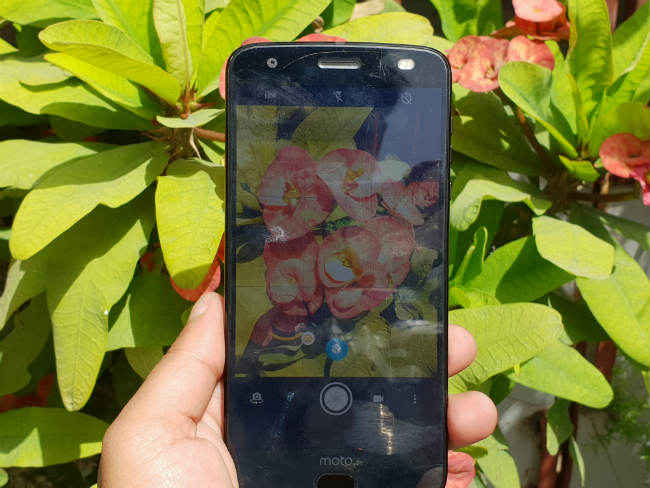
The Moto Z2 Force touts dual 12-megapixel cameras at the back. It also happens to be the company’s first dual camera flagship in India. But unlike the Moto X4’s extra wide-angle approach, the Z2 Force takes a leaf out of the mid-range Moto G5s Plus and adopts a RGB+Monochrome approach. Both the sensors have an F/2.0 aperture which isn’t as big as what most of the flagships tout these days. There’s also laser autofocus and dual LED flash to boot. However, there isn’t any sort of stabilisation present. Does this heady mix of the camera features actually make a difference? Well, somewhat.
The Moto Z2 Force isn’t going to beat the top-of-the-line flagships just yet. At best, the daylight shots will be close enough to the benchmark set by the Samsung flagships and Google’s Pixel phones. However, it does manage to take on its closest competition quite enthusiastically. Keep in mind that the camera on this one wasn’t touted that emphatically by Moto. Their focus was more on the unbreakable nature of this phone. Nevertheless, the camera is an integral part of the whole smartphone experience.
Daylight and HDR

As we mentioned earlier, the daylight shots from this phone are pretty amazing. Give this camera ample light, and it will return results that are indistinguishable from the average point-and-shoot. The colours are fairly reflected, if not a tad oversaturated. Aesthetically, the shots are quite pleasing. The camera also tends to oversharpen objects under highlight while the shadows are muddled.
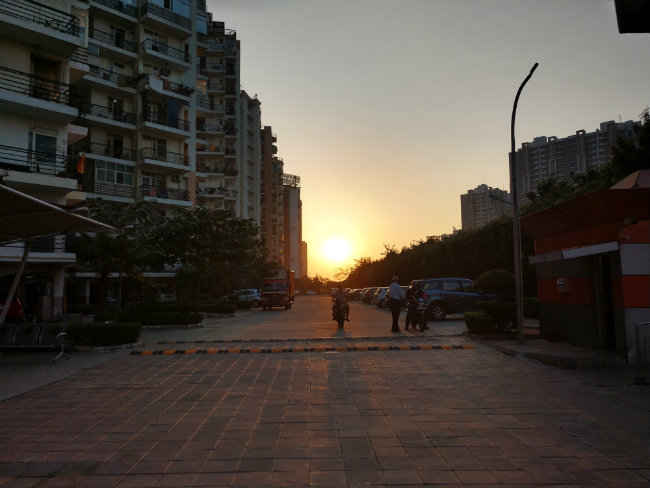
Indoor Incandescent
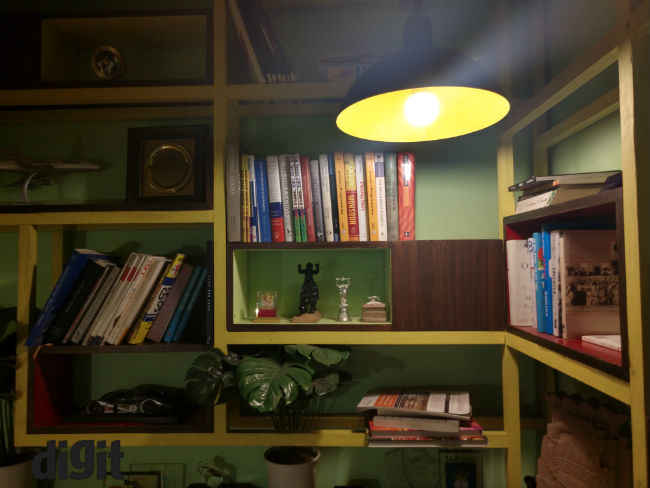
Notice the light flares and how the shadows have minimal details
Take the camera indoors, and things become darker. There’s distinctive flare from bulbs while the poorly lit areas practically have no details. The light distribution is commendable though, although there’s significant overexposure around the light source. There’s also a distinct shutter lag, although not as much as the Moto X4.


f you are taking photos away from the light source, the details are just about discernable. It’s nowhere as sharp as the OnePlus 5T or the cheaper, Honor View 10. The shots are just not stable enough. In our opinion, it’s the pixelsize-aperture combination that works against the camera. Theprimary camera has large 1.25 um size pixels, bigger even than the OnePlus 5T, while the aperture is at a relatively small F/2.0. The camera does not allow enough light when indoors for the larger pixels to work its magic, and the result is counterproductive where the details are not as sharp as it should be.
Lowlight
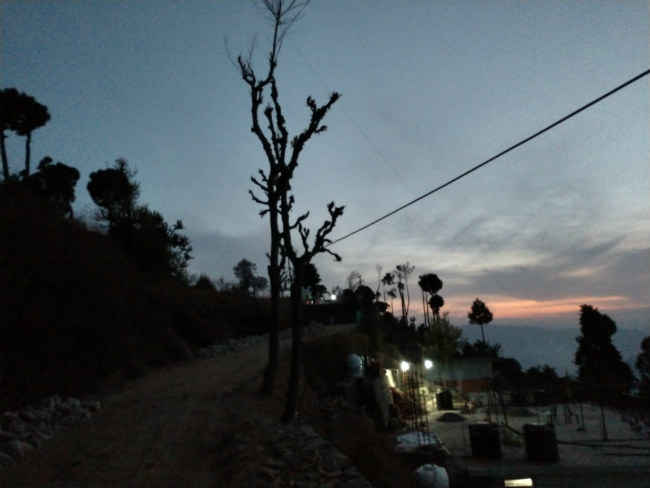
As the indoor performance should be indicating, there wasn’t much to expect from a low-lit situation. The photo taken at dusk is hazy and underexposed. The corners are literally dark while the horizon (which is the light source) has noise creeping in. The trees also look defocussed and the overall result isn’t even social-media worthy.
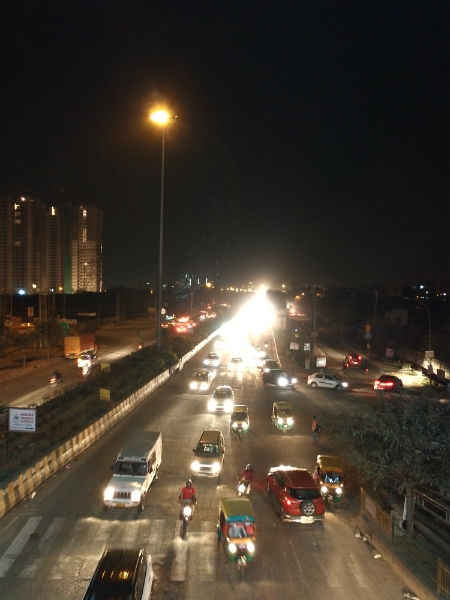
If you want to experiment with this phone, you might not get the desirable results. Using auto mode, we attempted to take a presentable shot of moving traffic. The result was an apocalytic rendering of a volcanic eruption in the middle of Delhi NCR. The light in the horizon looks like glowing lava devouring the road while the cars race ahead. Aesthetic no doubt, and the creative one can easily spin a story out of a flawed image, but it is in no way presentable.
B/W Mode

The Z2 Force has a dedicated mode for taking black and white photos, thanks to the secondary monochrome sensor. Because it doesn’t rely on colour, the monochrome mode has far better dynamic range and lesser noise. In fact, the results are quite artsy.
Depth Mode

Lastly, the portrait mode. Or as Moto wants to call it, Depth-enabled mode. Don’t go by the expression on Shrey’s face, the mode works but looks very artificial. There is ample blurring in the background but it seems like a shoddy attempt using the blur tool in Photoshop. The edges are not consistently sharp, for one. The background is also quite overexposed. Only the colours are preserved quite well, and someone not so enthusiastic about photography will appreciate the result.
Moto Mods? What are those?
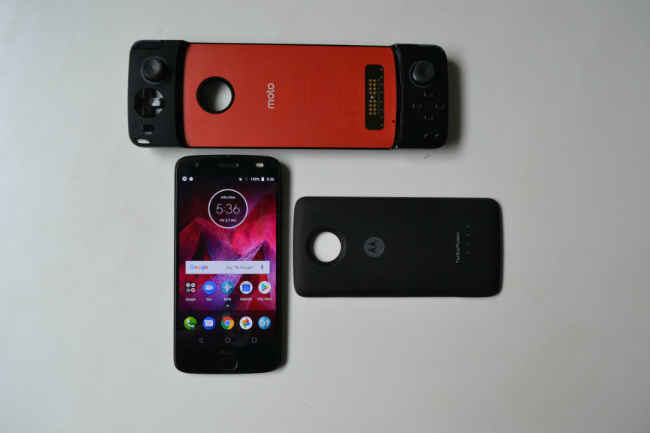
We were holding back when we stated that the focus of this device was the hard-to-break display. The Moto Z2 Force has a trump card that makes it a refreshing offering in the high-end segment. It is modular in nature. The phone has a 16-pin gold connector at the back that supports specially designed Moto Mods.
Moto Mods are accessories made specifically for the Z series of phones. They range from a gamepad to a projector. You can simply snap the Moto Mod to the connector and the phone morphs into something more than just a smartphone. Moto launched the Z series with support for Moto Mods around the time Google’s futuristic Project Ara came to an unfortunate halt. The Moto Mods are one of the few concepts of modular phone that made sense. Note that when you buy the Moto Z2 Force, you also buy into an expandable ecosystem.
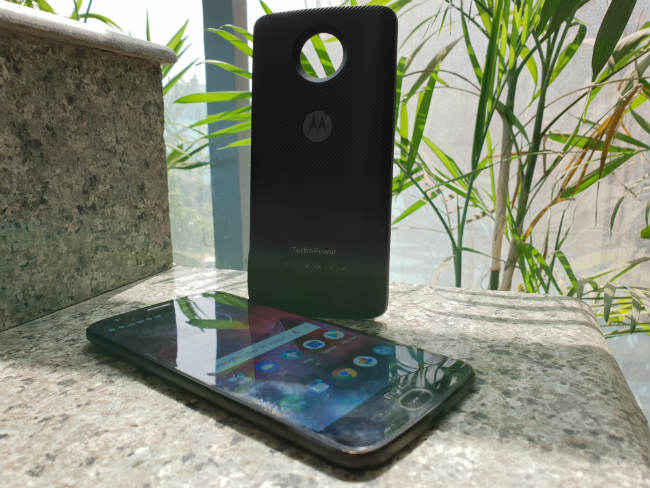
Moto makes it easier to get onboard the experience by bundling the Moto TurboMod along with the device. The mod is essentially a 3490mAh power bank that can supercharge the Z2 Force when its running out of charge. It has a tough exterior with a deep hole for the camera to fit in. There’s also a four-light LED indicator for the battery status and the Moto Batwing logo in the middle.
But this is just one of the mods. There’s a plethora of them. Among the new ones are the Moto GamePad and the new JBL Soundboost 2.0 Mod. There are others as well including an Alexa-enabled smart speaker and a 360 camera, which are not available in India.
The sheer possibility of the Moto Mods ecosystem makes the Z2 Force an enticing buy. However, they come at a cost. Each Moto Mod increases the overall money you spend on this phone. A couple of Moto Mods after, the Z2 Force is almost as expensive as the Samsung Galaxy S9. There’s also the question of how long the company will support the Moto Mods project. As per recent reports, Moto will be cutting down on the diversity of the offerings and only focus on those that have sold well in the past. That’s not a good sign, to be frank.
Will it last a day?
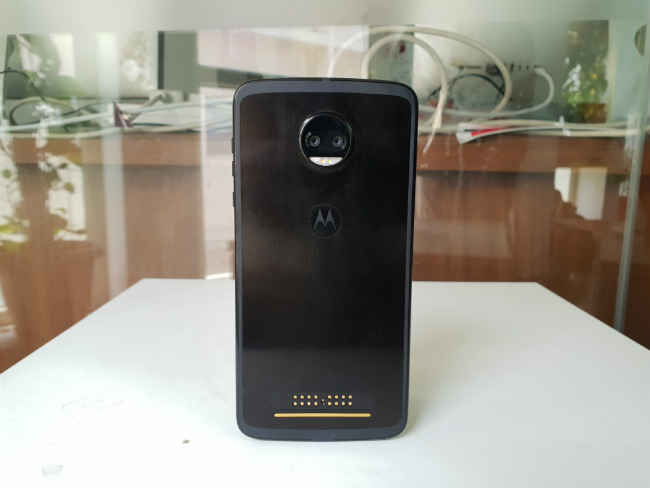
To maintain the slim form factor, the Moto Z2 Force had to make a crucial sacrifice. It had to cut down the battery capacity to a paltry 2,730mAh and the phone barely manages to last a day. We played a round newly launched Playerunkown’s Battegrounds on the phone and the battery drop was a harsh 20 percent. If you are not much a gamer though, the phone will last you the average work day. We used the device to browse the web, check social media, take photos and listen to music on the loudspeaker and we were left with around 10 percent charge.
The good thing is, Moto is bundling the TurboPower Mod with the phone which adds an additional 3,490mAh to the phone. Simply snap it on when the charge is running low and it will swiftly charge the phone to its full capacity in around an hour. We advise minimal use of the phone while charging though, as it tends to get a bit warm.
Is it better than the OnePlus 5T?
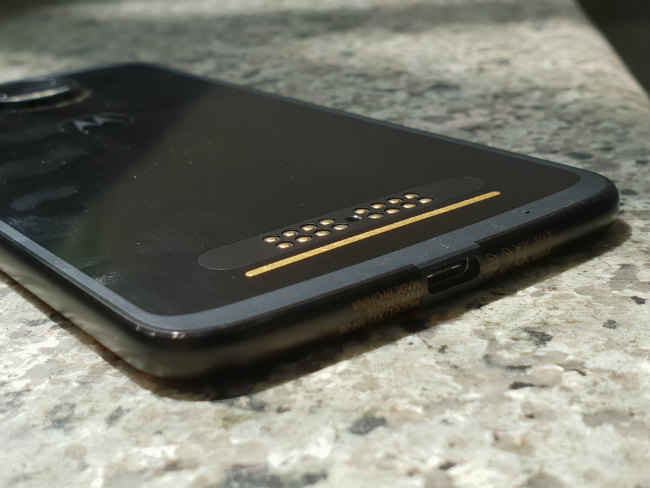
The Moto Z2 Force, priced Rs 34,999, sits just above the 6GB OnePlus 5T but they aren’t equals in any way. In fact, in terms of pure performance and imaging prowess, the OnePlus 5T is far ahead. What makes the Moto Z2 Force special is its durability and modular superpowers. The unbreakable display and the power of Moto Mods makes the phone a unique proposition in a world where every smartphone is essentially a photocopy of the other. We welcome this sort of diversity in the market. It makes our job way more interesting.
[ad_2]
Source link

Post a Comment